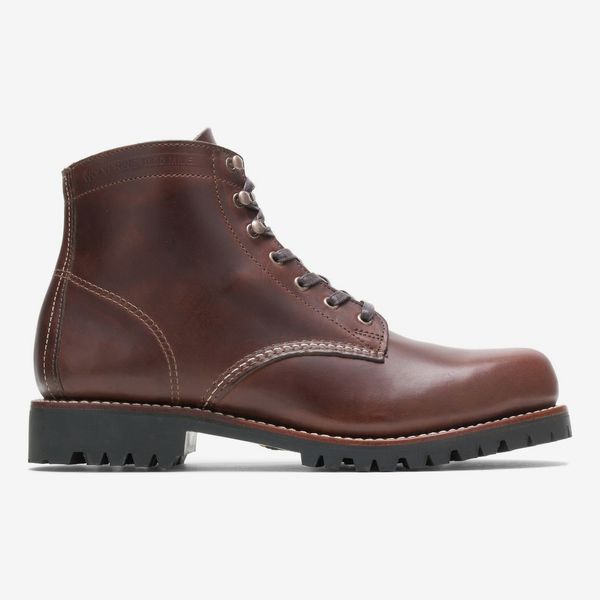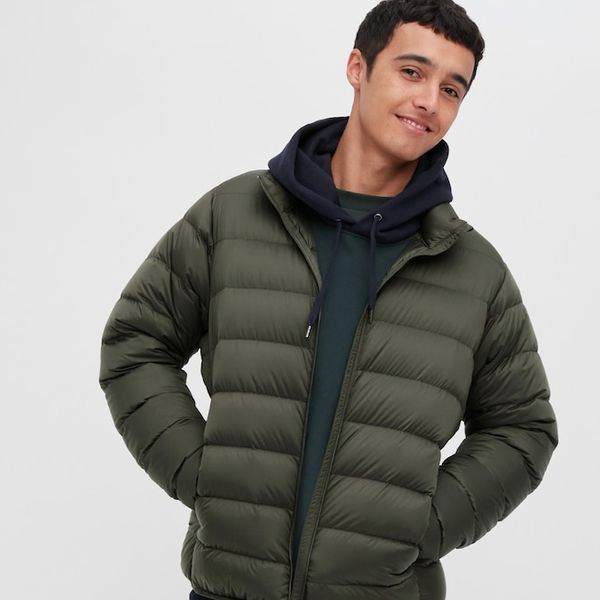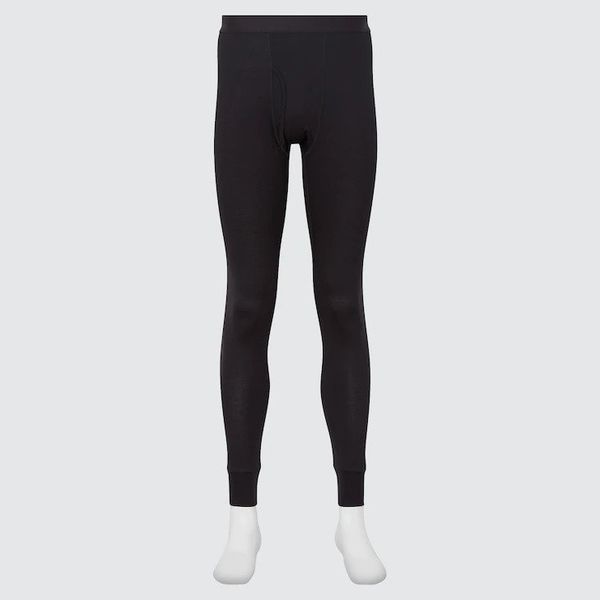
In this article
My faithful pair of winter boots becomes the most essential part of my wardrobe in colder months — alongside my thick wool socks. Whether you’re looking for a warm, waterproof pair that can provide traction through the snow and ice or an upgrade to your everyday boot that will keep your toes from freezing, I’ve rounded up the best men’s winter boots I’ve tested for those situations. Among the most reliable and best-known brands for winter use are Sorel, L.L. Bean, and North Face, but brands that specialize in work or hunting and fishing boots, like Blundstone and Xtratuf, also make boots that stand up to freezing conditions.
To hone this list, I wrote about the boots I’ve tested across multiple winters spent living in different parts of the country, including the Northeast, where winters could be particularly harsh. I also consulted with fellow Strategist staffers and stylish folks who live in chilly climes about their go-to winter shoes, and talked to them about how they think about protecting their feet in inclement weather. Additionally, I spoke with a couple of technical footwear designers, who advised on the best features to look for and what to avoid to keep your feet as warm and dry as possible.
What we’re looking for
Waterproofing
The gold standard for waterproof shoes and clothing is Gore-Tex, a finely woven waterproof membrane that locks out moisture while remaining breathable. But the majority of winter boots are simply treated with a durable-water-repellent (DWR) coating that can be perfectly adequate for milder climates. “If you live in Portland and it’s pouring 200 days a year, DWR is going to do nothing,” explains footwear designer and lecturer Igor Burt. “But if you live in California, you shouldn’t be buying Gore-Tex shoes.” For extra puddle protection, Burt suggests looking for boots made from leather (a material that is a “breathable natural protectant from water”) with minimal seams and stitching. “The more stitches on the outside of the boot, the less waterproof it is,” he advises. A vulcanized rubber outsole will give an additional rainbootlike effect.
Insulation
“If you have multiple boots and you’re going to use only one boot when temperatures are below freezing, look for insulation,” advises Burt. “You should be able to feel it with your fingers on the inside of the boot. If it’s the same material inside and outside, you know there’s no insulation.” He points out that if you’re spending less time in extreme conditions, there’s an easy hack for warming up a winter boot — and preventing blisters in the process: “Build insulation yourself in the form of moisture-wicking wool socks. You can choose when you want to use it and customize according to conditions.”
Traction
If you’re encountering ice and snow, traction is even more important than waterproofing. “The reason you slip is because the top layer of ice melts and you have a layer of water between your shoe and the ice,” explains footwear and product designer Mark Britton. In order to increase flexibility and control in such conditions, he recommends laced boots, which will have a tighter, more customized fit. Grip is also key, Burt says: “Walking on ice, you can’t get a shoe that has no studs or no lugs on the bottom. You’re going to be slipping all over the place.” Sometimes no amount of grippy lugs or studs will save you from slipping on icy surfaces. For those conditions, we recommend checking out our guide to winter traction cleats.
Best winter boots overall
Waterproofing: Water-resistant leather shaft, waterproof rubber outsole | Insulation: Yes | Traction: Laces, lugged rubber sole
So many winter boots look similar, with their rubber toe and vamp, tall shafts, and aggressive lug soles, but there are some small design details that can make a real difference. Footwear designer Igor Burt calls the Sorel Caribou is “one of the standards” for winter boots against which others should be measured, because it’s “a vulcanized boot with an interior lining, meaning it’s waterproof.” The Caribou is designed for heavy snow, with sealed seams and removable, washable felt insulation as well as faux fur cuffs around the calf to keep ice and water out. The D-rings make lacing, loosening, and tightening a bit easier and faster than with the narrower eyelets on other boots — not a trivial consideration when the shafts of these boots run 9.25 inches.
Best (less-expensive) winter boots
Waterproofing: Water-resistant leather upper, waterproof rubber outsole | Insulation: None | Traction: Laces, rubber tread
Almost all of my friends who grew up in New England own a pair of Bean Boots. When I lived in Boston (and experienced some harsh winters and wet springs), I learned why: They have a rain-boot bottom that surrounds the toe and sheds rain and slush, but have a laced-up leather top that make them a versatile shoe that you can move in while keeping your feet dry. (In fact, L.L.Bean invented the duck boot for wet hunting trips.) Former Strategist writer David Notis says they’re very waterproof and very durable: It took five years for his pair to need resoling. And “that’s one of the reasons I wanted these in the first place,” he adds. “You can keep repairing them.” He recommends buying an unlined pair of boots for more flexibility (“I like that I can also wear them in the fall or spring when it rains”). And come winter, break out a pair of heavy wool socks — we’re big fans of Darn Tough — or shearling insoles if it’s really cold.
Best shearling-lined winter boots
Waterproofing: Waterproof membrane | Insulation: Yes | Traction: Laces, lugged rubber sole
These hardy hiker-style winter boots are durable, warm, and waterproof. These are the boots I’d recommend for anyone who spends months at a time in snow. Made from leather, with a high shaft that’ll keep the snow out, this pair offers tight lacing for maximum traction and lugs for gripping on to snow and ice. Instead of Gore-Tex, the boots use a similar technology developed by UGG called DryTech, which creates a highly effective waterproof-bootie effect. They also feature a cozy sheepskin lining for comfort and warmth.
Best everyday winter boots
Waterproofing: Water-resistant leather | Insulation: None | Traction: Pull tabs, elastic gusset, lugged rubber sole
For non-extreme winter conditions — puddly commutes, wet park walks, and the occasional snow day — it’s hard to go past a pair of classic Blundstones. I’ve worn the same pair of Blundstones for seven winters (in Boston, New York, New Mexico, and Colorado), and I’m constantly surprised by how well they’ve held up to daily wear, from the outsole to the cushioning. I also use them in the spring and fall as rain boots. Even years later, they truly feel as durable and comfortable to walk in as they did when I first bought them, in part due to regular care and maintenance. (To keep the leather on your Blundstones shipshape, apply a salve or a waterproofing treatment. I use this $2 plumber’s wax.)
The real value of my Blundstones is that they shed water and slush, yet wearing them doesn’t feel like overkill, like a heavy snow boot might. These boots are a longtime Strategist favorite for a reason: They’re comfortable, reasonably waterproof (being made of leather, with minimal seams), and neutral enough to style with almost any outfit. They work well across seasons, develop an attractive patina over time, and get comfier with wear. Blundstones seem to mold to most people’s feet with ease, as they did with mine. Another reason I prefer Blundstones is that they’re incredibly easy to put on and take off, even while standing — there are no laces to fiddle with or tighten.
If you know you’ll be walking in freezing temperatures more often than not, the brand offers an insulated version of the same style, and for a somewhat dressier version, consider the Blundstone 1900.
Best slip-on winter boots
Waterproofing: None | Insulation: Yes | Traction: Pull tabs, lugged rubber sole
In cold weather, few footwear options feel better than warm, comfy slippers, and this pair is sturdy enough to handle winter conditions. Mike Rogge, the editor of Mountain Gazette and an avid skier, prefers spending his winters in ski boots but says these quilted boots are the best option for cold-weather chores, après-parties, and beyond. “These are the perfect run outside to take the trash out, go get in the car, take the dog for a quick pee break boots,” he says. “They are warm, keep my feet dry, and above all easy to slip on and slip off.” The Mountain Classics don’t have any waterproofing, so they’re best suited for drier, colder settings and not slush or rain.
Best lace-up winter boots
Waterproofing: Water-resistant leather | Insulation: None | Traction: Laces, lugged rubber sole
I’ve been wearing these vintage-looking USA-made boots for four winters now, and they have aged beautifully. (I wear a discontinued Wolverine model, the Arctic Boot, which has a Gore-Tex lining, but the brand’s newer Rugged Boot is similar to the Arctic.) The lugged Vibram outsole keeps my footing steady on iced-over sidewalks and slippery concrete. The leather will develop an attractive patina over time, and that rubber heel means these boots can be dressed up for more formal winter occasions.
Best (less-expensive) lace-up winter boots
Waterproofing: Gore-Tex waterproof membrane | Insulation: None | Traction: Laces, lugged rubber sole
These Vasque Sundowners have been around since 1984, which is a testament to their discreet but utilitarian design. Strategist advice columnist Chris Black swears by them for both form and function. He cites their simple, classic design as well as the fact that they’re fully waterproof thanks to a Gore-Tex membrane. “For the price, you really can’t beat them,” he adds, advising that the boots can be styled with baggy Levi’s 501s and a North Face Nuptse for a full winter fit. Leon Hedgepeth, editor at the menswear newsletter Sprezza, agrees and says he likes their versatility. “These are some of the most low-key boots. It’s such an easy shoe to throw on because it’s all black, and they’re easy to keep clean.”
Best winter rain boots
Waterproofing: Waterproof, vulcanized rubber | Insulation: Yes | Traction: Rubber tread, no lugs
If you truly do not want a single drop of water to touch your socks or feet, I recommend a pair of heavy-duty insulated rain boots. Ben Shryock, chief ranger of the Alaska State Parks Kodiak region, told us that Xtratufs are his only choice and daily go-to: “They are the most comfortable and durable rubber boots I’ve found. You can find them for sale in almost any coastal Alaskan town.” Shryock’s insulated 15-inch Xtratufs do a great job of keeping his feet both warm and dry, but he says that if you do happen to step in some water that goes over the 15-inch mark, they’ll air out fast — “much faster than leather boots.” Being too warm for extended indoor or summer wear, he’ll usually trade them out for the uninsulated regular Xtratufs in April.
Best winter hiking boots
Waterproofing: Gore-Tex membrane | Insulation: None | Traction: Laces, lugged rubber sole
As someone whose feet tend to run hot, I prefer non-insulated footwear, even in the winter. “It’s not necessarily always true that everyone’s going to need insulated hiking boots in the winter,” Scott Wilkinson, communications director at the Pacific Crest Trail Association, tells us. “So much of that depends on temperature, weather conditions, whether it’s wet or dry, and the individual — some people’s feet are always freezing and they’re going to need more insulation.” Budget-wise, you’re better off investing in a quality waterproof boot that can be used in all seasons, like these Gore-Tex Salomons that Wilkinson uses in both winter and summer. (The Quest 4 GTX is also our top men’s hiking-boot recommendation.) Despite being waterproof, these boots will never feel stiff, being designed to flex with your foot in the same way that trail runners might — but unlike trail runners, they feature high cuffs to keep water, debris, and even snow, out of your socks.
Some more men’s winter essentials we’ve written about
Our experts
• Chris Black, Strategist columnist
• Mark Britton, footwear and product designer
• Igor Burt, footwear designer, apparel designer, and lecturer
• Leon Hedgepeth, editor at Sprezza
• James Lynch, Strategist contributor
• David Notis, former Strategist writer
• Mike Rogge, editor of Mountain Gazette
• Anthony Rotunno, former Strategist senior editor
• Ben Shryock, chief ranger of the Alaska State Parks Kodiak region
• Ben Stricof, owner of & Son
• Scott Wilkinson, communications director of the Pacific Crest Trail Association
With additional reporting by Katherine Gillespie.
The Strategist is designed to surface the most useful, expert recommendations for things to buy across the vast e-commerce landscape. Some of our latest conquests include the best men’s wardrobe basics, white T-shirts for men, jeans for men, white sneakers for men, Chelsea boots, and flattering clothes for men. We update links when possible, but note that deals can expire and all prices are subject to change.
Every editorial product is independently selected. If you buy something through our links, New York may earn an affiliate commission.



















